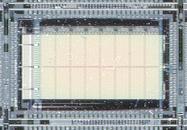| Back to Yann's Page |
 |
From early 1996 to early 2002 I was head of the Image Processing Research Department at AT&T Labs-Research. Despite my group's name, much of our work and background was in machine learning, pattern recognition, and computer vision as much as in image processing.
| Members and Alumni |

We took this picture right before most members of the group left AT&T in early 2002.
back row (left to right): Vladimir Vapnik, Leon Bottou, Yann LeCun, Joern Ostermann, Hans-Peter Graf front row: Eric Cosatto, Tricia Green, Fu Jie Huang, Patrick Haffner.
As of 2006, Vladimir, Leon, Hans-Peter, and Eric are all at NEC Labs in Princeton, Patrick is at AT&T, Jie is a PhD student at NYU, and Joern is at Leibniz University in Hanover.
Former Members and Alumnis
- Yoshua Bengio
- Leon Bottou
- Eric Cosatto
- Hans-Peter Graf
- Patrick Haffner
- Yann LeCun
- Joern Ostermann
- Vladimir Vapnik
| Contributions |
- DjVu: the emerging standard for distributing scanned documents and high resolution images on the web.
- LeNet: Watch a convolutional neural network recognize handwriting. Convolutional nets are loosely modeled after biological visual systems.
- Learning Theory: The insanely popular Support Vector Machine technique spurred an entire sub-field of machine learning.
- Photo-Realistic Synthetic Talking Heads: based on sample-based graphics techniques, these life-like synthetic talking head look quite natural. Watch this MPEG movie of the Vir2Elle synthetic Visual Text To Speech system. text comes in, and speech and video comes out without any human intervention. More recent demos are available at Research on 3D talking head models resulted in the popular PlayMail system that allows anyone to upload a picture and have the character in the picture "speak" the text of an email message.
| Past Research |
My former group was the direct descendent of Larry Jackel's Adaptive Systems Research Department at Bell Labs. Created in 1985 the Adaptive Systems Research Department made important contributions to neural net hardware, learning theory, neural net algorithms, and pattern recognition, particularly handwriting recognition, and data mining. It was originally created as part of the Electronics Lab in Holmdel, NJ, lead by Chuck Shank, and later by Rich Howard.
The group produced not only the world's first neural net chip, but also the first (and may be the last) neural net chips to actually do something useful. Generations of chips included "Net32K" designed by Hans-Peter Graf, and the ANNA chip designed by Bernhard Boser and Edi Sackinger with help from Yann LeCun. Those chips used mixed digital/analog computation internally.
 |
 |
| Net32K | ANNA |
Produced in 1991, Net32K included 256 units with 128 weighted inputs each. The inputs and weights were binary, but units could be combined so as to allow 4-bit resolution on the inputs. Internal shift register allowed to perform convolutions with minimal off-chip communication. The peak speed was 320 billion multiply-adds per second (with binary vectors).
First tested in 1992, ANNA included 64 units with a total of 4096 weights with 6-bit precision and inputs with 4-bit precision. Optimized for convolutions, ANNA had a peak throughput of 4 billion multiply-add per second.
Both chips were integrated in various experimental boards and tested in PCs and Sun workstations.
(to be continued)
| Friends and Colleagues |
The following researchers were members of the group at various times: Bernhard Boser, Corinna Cortes, John Denker, Isabelle Guyon, Donnie Henderson, Larry Jackel, Edi Sackinger, Patrice Simard, Sara Solla,
Close collaborators included Henry Baird, Jan Ben, Jane Bromley, Chris Burges, Rich Howard, Ofer Matan, Alex Smola.
Temporary members, postdocs, and visitors included among others Bernhard Schoelkopf, Alex Smola, Jason Stitson, Chris Watkins, Quen-Zhong Wu.
